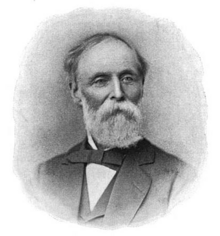Bela Hubbard
| Bela Hubbard | |
|---|---|

Bela Hubbard
|
|
| Born |
23 April 1814 Hamilton, New York |
| Died | 13 June 1896 Michigan |
| Residence | Detroit, Michigan |
| Citizenship | United States |
| Alma mater | Hamilton College |
| Known for | Memorials of a Half Century in Michigan and the Lake Regions |
Bela Hubbard (April 23, 1814 – June 13, 1896) was a 19th-century naturalist, geologist, writer, historian, surveyor, explorer, lawyer, real estate dealer, lumberman and civic leader of early Detroit, Michigan. Hubbard is noted as one of the pioneer geologists of Michigan starting with expeditions undertaken, while in his twenties, with Michigan's geologist Douglass Houghton. These early expeditions explored the salt springs of Michigan's Grand and Saginaw river valleys. Later, Hubbard surveyed many of the regions around Lake Superior, Lake Michigan and Lake Huron.
Bela Hubbard, second son of Phebe and Thomas Hill Hubbard was born in Hamilton, N. Y. He graduated at Hamilton College in 1834, and in the spring of 1835 moved to Detroit, Michigan to help manage the family's farm and land agency.
Hubbard was quick-deeded ownership of the two-hundred-and-fifty acre Knaggs farm at Springwells on the river southwest of Detroit. It had been purchased by his father the year before. For several years both Bela and Henry Hubbard, an older sibling who had arrived in Detroit the year previous, stayed in the old Knagg's farmhouse. Bela Hubbard used his farm not solely as a means of production but to apply scientific principles towards the advancement of agriculture.
In 1837, after the Michigan Legislature established a geological survey to conduct a study of the state's natural resources, the state geologist, Douglass Houghton, appointed Hubbard his assistant. Hubbard served the Geological Survey from 1837 to 1841. Major field work undertaken by Hubbard for the survey included a coast survey of the Lake Huron and Michigan shores of the Lower Peninsula, done with Houghton in 1838; surveys of Wayne and Monroe Counties, also in 1838; and a survey of the Lake Superior coast and the copper region of Keweenaw Point with Houghton, in 1840. After 1840 the work of the Geological Survey was reduced, and Hubbard left the agency.
...
Wikipedia
